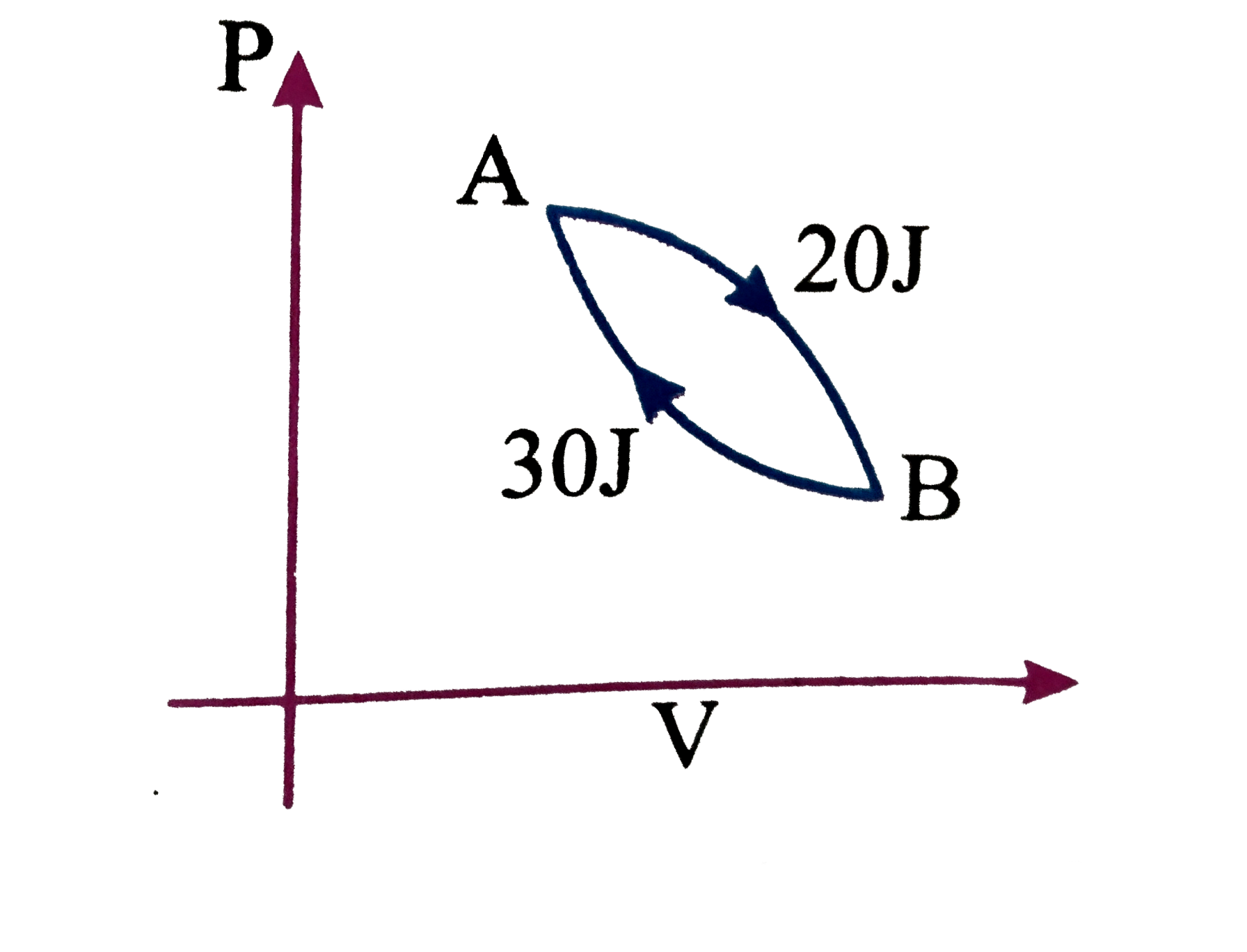Work done by a gas in a given process is −20J. Heat given to the gas is 60J. Find change in internal energy of the gas.
To solve the problem of finding the change in internal energy of the gas, we will use the first law of thermodynamics, which is expressed as:
Q=ΔU+W
Where:
- Q is the heat added to the system,
- ΔU is the change in internal energy,
- W is the work done by the system.
1. Identify the values given in the problem:
- Work done by the gas, W=−20J (negative indicates work is done by the gas).
- Heat added to the gas, Q=60J.
2. Rearrange the first law of thermodynamics to solve for change in internal energy (ΔU):
ΔU=Q−W
3. Substitute the known values into the equation:
ΔU=60J−(−20J)
4. Simplify the equation:
ΔU=60J+20J
ΔU=80J
5. Conclusion:
The change in internal energy of the gas is ΔU=80J.
- Q is the heat added to the system,
- ΔU is the change in internal energy,
- W is the work done by the system.
- Work done by the gas, W=−20J (negative indicates work is done by the gas).
- Heat added to the gas, Q=60J.
ΔU=Q−W
ΔU=60J−(−20J)
ΔU=60J+20J
ΔU=80J
The change in internal energy of the gas is ΔU=80J.
Topper's Solved these Questions
- BOOK - DC PANDEY ENGLISHCHAPTER - LAWS OF THERMODYNAMICSEXERCISE - Example Type 12videos
LAWS OF THERMODYNAMICS
- BOOK - DC PANDEY ENGLISHCHAPTER - LAWS OF THERMODYNAMICSEXERCISE - Example Type 21videos
LAWS OF THERMODYNAMICS
- BOOK - DC PANDEY ENGLISHCHAPTER - LAWS OF MOTIONEXERCISE - Medical entrances gallery39videos
LAWS OF MOTION
- BOOK - DC PANDEY ENGLISHCHAPTER - MAGNETIC EFFECT OF CURRENT AND MAGNETISMEXERCISE - Integer type Questions10videos
MAGNETIC EFFECT OF CURRENT AND MAGNETISM
Similar Questions
A diatomic gas is heated at constant pressure. If 105J of heat is given to the gas, find (a) the change in internal energy of the gas (b) the work done by the gas.
View SolutionTemperature of two moles of a monoatomic gas is increased by 600 K in a given process. Find change in internal energy of the gas.
View SolutionIn a cyclic process shown in the figure an ideal gas is adiabatically taken from BtoA, the work done on the gas during the process BtoA is 30,J when the gas is taken from A to B the heat absorbed by the gas is 20J Then change in internal energy of the gas in the process A to B is :
 View Solution
View SolutionIn a cyclic process shown in the figure an ideal gas is adiabatically taken from BtoA, the work done on the gas during the process BtoA is 30,J when the gas is taken from A to B the heat absorbed by the gas is 20J Then change in internal energy of the gas in the process A to B is :
 View Solution
View SolutionIn a cyclic process shown in the figure an ideal gas is adiabatically taken from BtoA, the work done on the gas during the process BtoA is 30,J when the gas is taken from A to B the heat absorbed by the gas is 20J Then change in internal energy of the gas in the process A to B is :
 View Solution
View SolutionStatement 1: Heat supplied to a gas is process is 100 J and work done by the gas in the same process is 120 J, then pressure of he gas in the process should increase.
because
Statement2: Work done by the gas is greater than the heat supplied to the gas. Hence, internal energy of the gas should decrease.View Solution400 J of work is done on a gas to reduce its volume by compression adiabatically. What is the change in internal energy of the gas?
View SolutionA sample of ideal gas (y = 1 .4) is heated at constant pressure. If an amount of 140 J heat is supplied to the gas, then change in internal energy of the gas
View Solution
A sample of an ideal gas is taken through the cyclic process abca and shown in the figure. The change in the internal energy of the gas along the path ca is −180J. The gas absorbs 250J of heat along the path ab and 60 J along the path bc. the work done by the gas along the path abc is:View SolutionAn ideal gas with adiabatic exponent (γ=1.5) undergoes a process in which work done by the gas is same as increase in internal energy of the gas. Here R is gas constant. The molar heat capacity C of gas for the process is:
View Solution

